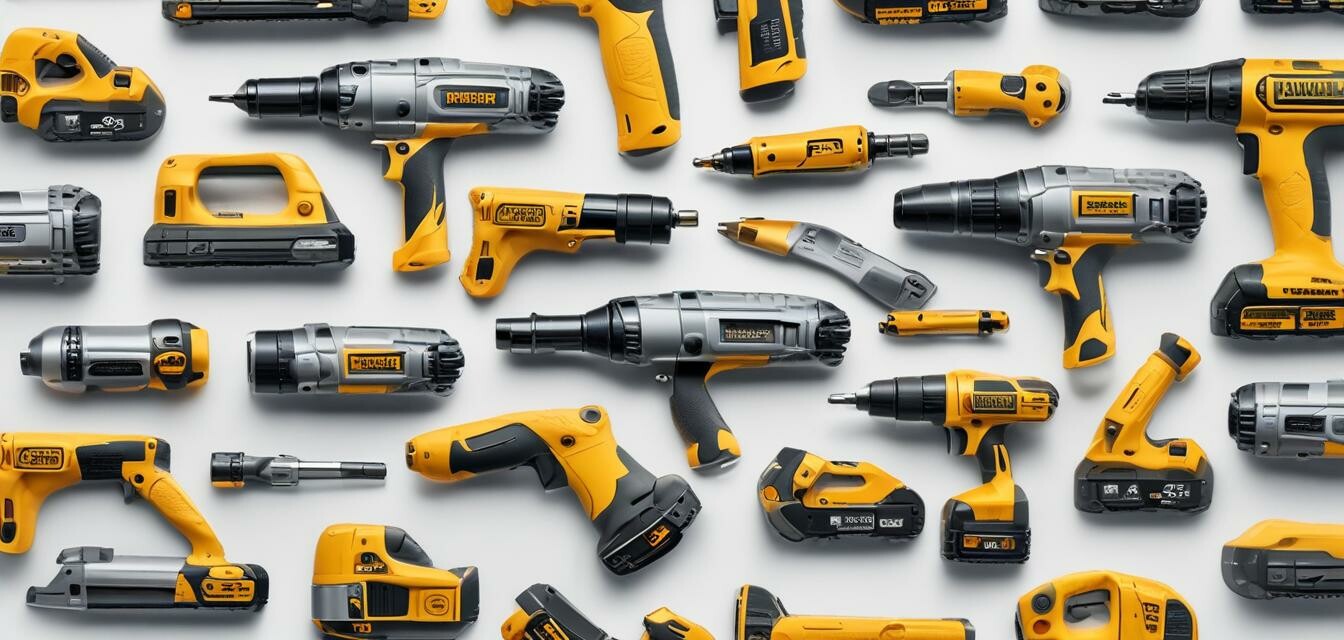
Safety regulations impacting power tool design
Key Takeaways
- Safety regulations shape the features and design of power tools.
- Compliance ensures user safety, reducing accidents and injuries.
- New technologies are increasingly incorporated to meet safety standards.
- Understanding regulations helps contractors and DIY enthusiasts make informed choices.
- The future of power tool design will continue to evolve with ongoing safety innovations.
In the ever-evolving world of portable power tools, safety is a paramount concern. Advancements in technology have led to the rethinking of power tool design, making safety regulations critical in guiding these improvements. This article delves into the various safety regulations impacting the design and manufacture of power tools, helping contractors and DIY enthusiasts understand their significance and relevance.
The importance of safety regulations in power tool design
When power tools are designed and manufactured with safety regulations in mind, manufacturers ensure that users can operate the tools with minimal risk of injury. Compliance with these regulations not only protects users but also builds trust in brands. Below are the reasons why safety regulations are vital:
- Reduce risk of accidents and injuries
- Enhance product reliability
- Promote industry standardization
- Facilitate better user experience
Key safety regulations impacting power tools
Several safety regulations affect the design and production of power tools. Below is a summary of the most relevant regulations that manufacturers must comply with:
| Regulation | Description | Impact on Tool Design |
|---|---|---|
| ANSI standards | The American National Standards Institute sets safety standards for various tools. | Influences guards, shut-off features, and overall ergonomics. |
| OSHA regulations | The Occupational Safety and Health Administration mandates safe practices in the workplace. | Encourages safety features to mitigate workplace hazards. |
| UL certification | Underwriters Laboratories establish product safety and testing standards. | Ensures products undergo rigorous testing for electrical safety. |
| CE marking | This indicates compliance with European safety standards. | Affects marketing of tools in European regions requiring adherence to safety parameters. |
Technological advancements responding to regulations
As regulatory standards evolve, so do the technologies that power the design of portable power tools. Manufacturers are increasingly employing new technologies to meet compliance demands:
- Smart sensors - Monitor usage and identify potential hazards.
- Automatic shut-off features - Mitigate risks due to inactivity or overheating.
- Ergonomic designs - Reduce strain during use, promoting user health.
- Enhanced safety guards - Offer better protection against accidents.
Guidance for contractors and DIY enthusiasts
As you navigate the vast array of power tools available on the market, understanding safety regulations is crucial. Here are some tips to ensure you’re making informed choices:
Tips for choosing safe power tools
- Research the safety features of any tool before purchasing.
- Look for compliance marks such as ANSI, UL, or CE.
- Read reviews about the safety performance of tools from other users.
- Familiarize yourself with your local workplace safety regulations.
- Prioritize purchasing tools from reputable brands that prioritize safety.
The future of power tool safety design
The landscape of power tools will continue evolving as new regulations and technologies emerge. We expect to see advancements in battery safety, wireless technology, and innovative materials that enhance durability and user protection. This progress presents a unique opportunity for manufacturers to differentiate themselves by emphasizing safety in both marketing and product features.
Pros
- Enhances user safety with advanced features.
- Promotes innovation and design quality.
- Establishes consumer trust in brands.
- Facilitates compliance with workplace standards.
Cons
- Can increase production costs for manufacturers.
- May limit design flexibility for certain tools.
- Requires continuous updates to meet new regulations.
Conclusion
Understanding the safety regulations impacting power tool design is essential for anyone involved in the contracting and DIY landscape. By being aware of these regulations, users can make informed decisions when selecting tools, ensuring their projects are not only successful but also conducted with the utmost safety.
For more insights and updates on the power tools industry, check out our other articles on News and Trends and Buying Guides for essential tips.
